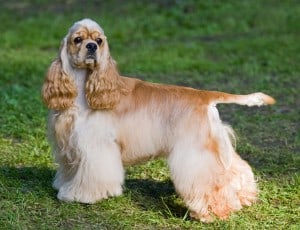Good day and welcome everyone!
This is Sharda with another Cocker Spaniel newsletter
First, let’s go back in time and learn more of the Cocker Spaniel History!
Here we go!
EMERGENCE OF COCKER SPANIELS
Again, the exact timeline is unknown but sometime over the next 10,000 years humans began to take an active role in breeding dogs, fostering certain characteristics for particular uses.
Civilizations that developed in both the eastern and western hemispheres depended on dogs for a number of uses in their struggle for survival.
Asians, Egyptians, Assyrians, Greeks, and Romans used dogs as guards, companions, and hunters as well as in times of war.
Archaeological discoveries, cave drawings, wall paintings, ancient artifacts and written records depict the role of dogs in early cultures throughout all parts of the world.
Native Americans in North and South America had several of their own dog breeds before the first European ever set foot on western soil.
In the first century A.D. the Romans wrote what might be considered the first book on dog breeding, including notes for fostering the best traits in guard dogs and sheepdogs.
They also created the first classification system defining dogs as house dogs, shepherd dogs, sporting dogs, war dogs, dogs that ran by scent and dogs that ran by sight.
Due to years of intentional and natural cross-breeding and in-breeding, today’s dogs bear little resemblance to those of the Roman era.
However, there a number of classification systems in place today that can be considered descendants of this ancient system.
HISTORY OF THE COCKER SPANIEL
The exact origin of the Spaniel dog family is a bit fuzzy, and the longer a breed has been around the more difficult it is to pin down.
While there is evidence of the cocker spaniel amazing breed in France and Switzerland, its ancient origins are believed to come from Spain.
There is mention of the “Spanyell” in European society dating as far back as the 14th century but it wasn’t until the 1800s that small spaniels were widely developed in England to help flush and retrieve game.
The best hunters were used for breeding, which created a generation of skilled hunters but the characteristics of these puppies were inconsistent, so a split was made.
Essentially only the sizes of the puppies mattered and The Kennel Club (England) divided the dogs by weight alone.
Dogs weighing less than 25 lbs. were classed as Cocker Spaniels; as their primary use was to hunt a game bird called the woodcock.
Those weighing over 25 lbs. became known as the Springer Spaniel; the name being derived from their ability to “spring” game.
Cockers are to this day the smallest in the sporting and gundog groups.
The Cocker Spaniel has been exhibited in the U.S. since the early 1880s.
In 1883 classes were provided for the breed at English bench shows.
In 1892 the breed was given breed status in England’s Kennel Clubs stud book.
The American Spaniel dog has evolved somewhat differently in type, size, and colouring from the breed now recognized as the English Cocker Spaniel.
By the 1930s the American variety had become so different from its English ancestors that it received status as a separate breed by The Kennel Club.
The American Kennel Club granted a separate breed designation for the English Cocker Spaniel in 1946.
The Field Trial Club began field trials for the breed in the U.S. in the 1920s.
I hope that you learned something from today’s Cocker Spaniel newsletter.
All the best and take care
Warmly,
Sharda Baker

